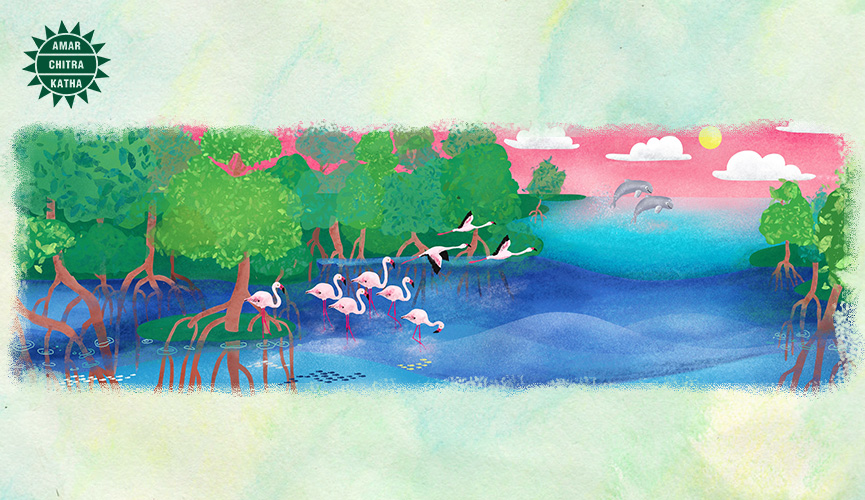By Shakthi Bharathi
Every year on 2 February, we celebrate World Wetlands Day, to bring attention to wetlands, which are crucial to our survival on Earth. But wait — what’s a wetland?

All about wetlands
Wetlands are areas of land, permanently or seasonally covered by water. They reduce flooding, trap carbon, and combat climate change. They also clean and filter water, earning the tag “Kidneys of the Earth”.
On 2 February, 1971, the Ramsar Convention, which pledges conservation and sustainable use of wetlands, was signed in Ramsar, Iran. India joined the treaty in 1982.
Fun facts!
Did you know that Sambhar Lake, in Rajasthan, is a wetland? Every monsoon, flamingos flock to the lake, in a vibrant display of migration.
Another such wetland is Chilika Lake in Odisha. It is home to rare aquatic animals, including the ever-smiling Irrawaddy dolphin.
Wetlands are just as rich in flora as they are in fauna. Pichavaram Village of Tamil Nadu has the world’s second-largest mangrove forest. (Psst…the first is also our very own Sunderbans!)
The threat to our wetlands
Due to pollution and exploitation, wetlands have become one of the world’s most endangered habitats. Over 70 Indian wetlands of significant value have been identified by the Ramsar Convention, but we are losing them at the rate of 2-3% every year!
It is time for us to speak up, take action, and protect Mother Nature’s invaluable gifts, for our own survival and the survival of all life on Earth. Make a resolution and be the change!
Read about inspiring figures who have brought about changes in the world, on the ACK Comics app!





